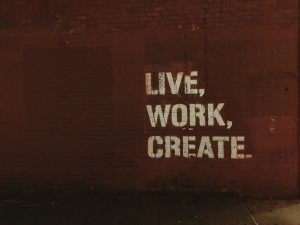 We don’t have a job shortage, we have a job-mismatch problem.
We don’t have a job shortage, we have a job-mismatch problem.
In America, we have a habit of being a reactive, rather than a proactive nation and this tendency is especially problematic in education. If we are preparing our students for jobs that existed yesterday, we are developing obsolete workers. If we teach our students to be ready for today, we will predictably have many adults without the skills needed to get jobs in the future. This is a predictable, and therefore addressable, problem. In this arena, there are many points to consider but this article focuses on one competency: the ability to see how information connects across time and space and consequently, new ways to look at old data.
“Study the science of art. Study the art of science. Develop your senses — especially learn how to see. Realize that everything connects to everything else.” – Leonardo daVinci
If we develop the mind to think of information as unconnected pieces of data, it is no wonder that we will create adults who interpret situations and solve problems using only one area of knowledge. The result will be what we call stove-piped solutions, or products that deal with one issue at a time. This is not only inefficient but also ineffective.
Jobs of the future will require cognitive agility and creative problem solving skills…everything else will be automated.
We may not like it. We may not wish it to be true. We can regulate it. But it will still happen. Automation of basic tasks is happening because businesses want to drive toward the most efficient processes and maximize innovation.
In the next generation job market, employers will be looking for humans who can do what computers can’t.
Students will not need to memorize information because they can access it anywhere, anytime. They will not need to calculate by hand because the computer will do it for them. They will not even need to aggregate or visualize data because the computer will do that too. Instead, future workers will need to interpret sums of data across structures. They will need to develop news ways to look at old problems. They will need to operate in multi-disciplinary teams and they will need to know how to provide the meta-vision to others in a succinct, clear, single visual message.
 All roads lead to the need to include arts education as a significant part of learning for the future.
All roads lead to the need to include arts education as a significant part of learning for the future.
Art, whether it be visual or auditory (music), helps develop the brain in ways other subjects do not. It affects how much information load the brain can take in, it affects the arousal level of the brain to improve processing speed, and it adds a layer of interpretation and communication to learning experiences not otherwise attainable. In short, arts education will be one of the primary differentiators not only at the individual level for job readiness but also at the national level as it will change the way our country addresses our societal and world-level problems.
To evolve as a nation, we must recognize the necessity of arts education and ensure that we support our youngest citizens in becoming the next generation creative, agile workforce.
